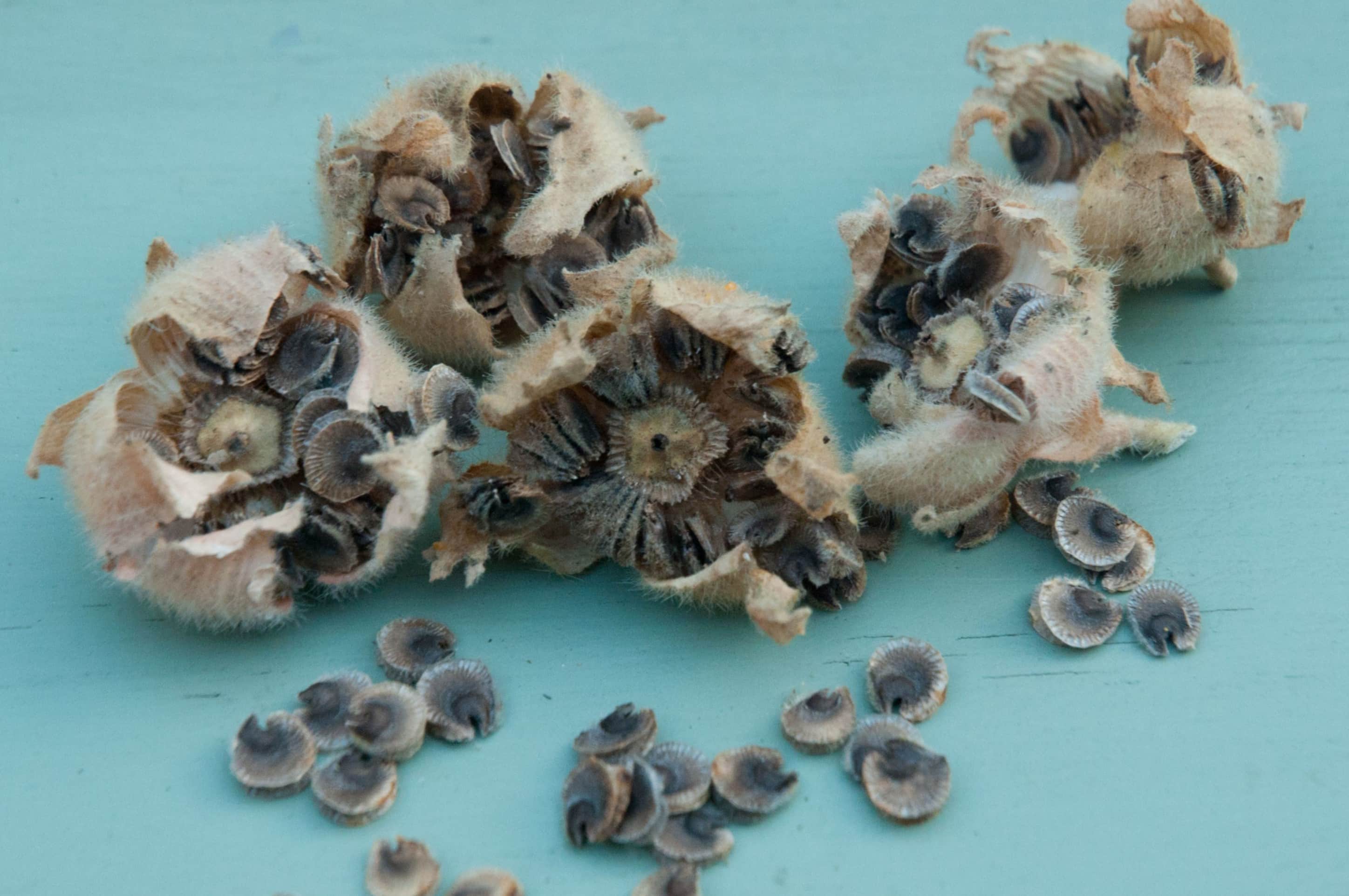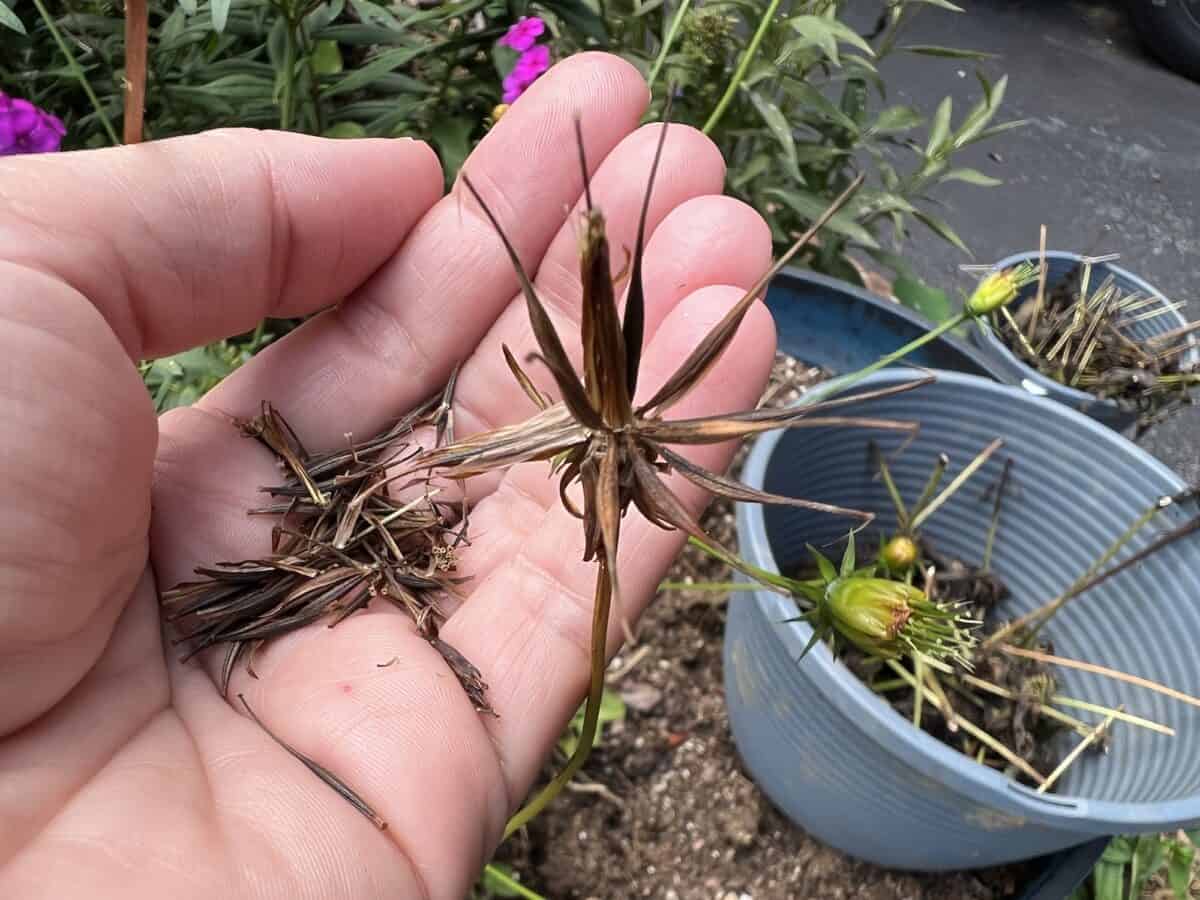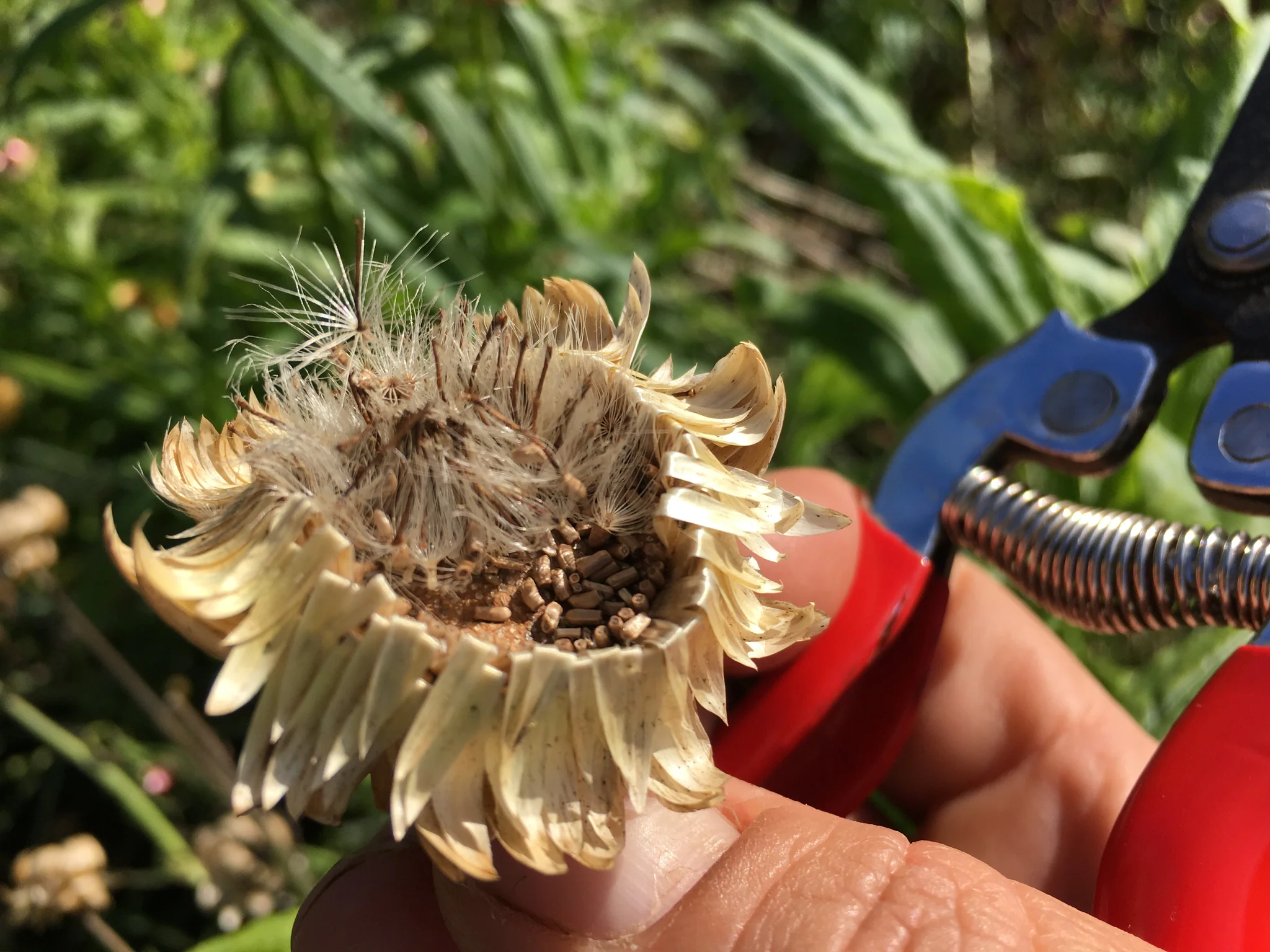Home>Garden Essentials>When To Plant Four O’clock Seeds


Garden Essentials
When To Plant Four O’clock Seeds
Modified: March 16, 2024
Discover the optimal time for planting 4 o'clock seeds in your garden. Explore our expert tips and get started on creating a vibrant and colorful outdoor space.
(Many of the links in this article redirect to a specific reviewed product. Your purchase of these products through affiliate links helps to generate commission for Storables.com, at no extra cost. Learn more)
Introduction
Welcome to the world of gardening! If you’re looking to add a touch of beauty to your outdoor space, planting 4 O’clock seeds might be just what you need. These vibrant and fragrant flowers are a popular choice among garden enthusiasts due to their stunning blooms and ease of cultivation. In this article, we will explore everything you need to know about planting 4 O’clock seeds, from understanding the seeds themselves to the ideal time for planting and caring for the plants. So, roll up your sleeves and let’s dive into the fascinating world of 4 O’clocks!
Key Takeaways:
- Plant 4 O’clock seeds in spring after frost for vibrant blooms. Consider factors like climate, soil, and sunlight for a thriving garden.
- Care for 4 O’clock plants with moderate watering, occasional pruning, and light fertilization. Troubleshoot issues like poor blooming and pest infestations for healthy, vibrant blooms.
Read more: How To Plant Four O’clock Seeds
Understanding 4 O’clock Seeds
Before you start planting 4 O’clock seeds, it’s important to understand the nature of these seeds and the plants they will grow into. The scientific name for 4 O’clocks is Mirabilis jalapa, and they belong to the Nyctaginaceae family. These lovely flowers derive their name from their unique characteristic of opening their blooms in the late afternoon, around four o’clock.
4 O’clock seeds come in a variety of colors, including shades of pink, white, yellow, red, and even bi-color combinations. The seeds are relatively large compared to other flower seeds, making them easy to handle and sow. They have a hard outer shell that protects the embryo inside.
One interesting aspect of 4 O’clocks is their ability to change flower color. Some varieties exhibit what is known as “flower color polymorphism,” which means that a single plant can produce flowers of different colors. This adds an element of surprise and excitement to your garden, as you may not know what color blooms will appear!
These flowers are known for their delightful fragrance, which is especially prominent in the evenings. The scent attracts various pollinators, including butterflies and hummingbirds, making them not only visually appealing but also beneficial to the ecosystem.
Now that we have a better understanding of 4 O’clock seeds, let’s explore the factors you should consider before planting them.
Factors to Consider
When it comes to planting 4 O’clock seeds, there are a few essential factors to consider to ensure the success of your garden. These factors will help you create an optimal environment for the seeds to germinate and flourish. Let’s take a closer look at each of these factors:
- Climate: 4 O’clocks are known to thrive in warm climates. They prefer temperatures between 70°F and 85°F (21°C and 29°C). If you live in an area with cooler climates, you can still grow them as annuals or in containers that you can bring indoors during the colder months.
- Soil: These flowers prefer well-draining soil with a pH level between 6.0 and 7.5. Before planting, it’s a good idea to amend the soil with organic matter to improve its fertility and drainage. This will provide the necessary nutrients for the seeds to grow into healthy plants.
- Sunlight: 4 O’clocks are sun-loving plants and require at least six hours of direct sunlight each day. Choose a spot in your garden that receives ample sunlight to ensure the plants receive the energy they need for optimal growth and flowering.
- Watering: These flowers require moderate watering. Allow the soil to dry slightly between waterings to prevent overwatering, which can lead to root rot. However, make sure not to let the soil dry out completely, as this can cause stress to the plants.
- Space: Keep in mind that 4 O’clock plants tend to spread and can reach heights of up to two feet. Make sure to provide enough space between each plant to allow for proper air circulation and prevent overcrowding.
- Companion Plants: Consider companion planting to enhance the beauty of your garden. 4 O’clocks pair well with other annuals, such as marigolds, zinnias, and petunias. They also make an attractive addition to mixed flower beds and borders.
By considering these factors and preparing your garden accordingly, you will create an environment that is conducive to the growth and health of your 4 O’clock plants. Now, let’s move on to explore the ideal time for planting these seeds.
Ideal Time to Plant 4 O’clock Seeds
The timing of planting 4 O’clock seeds is crucial for their successful growth and development. These flowers are typically grown as annuals in most regions, meaning they complete their lifecycle within one year. The ideal time to plant the seeds is in the spring, after the danger of frost has passed and the soil has warmed up.
For temperate climates, where the summers are hot and winters are mild, you can sow the seeds directly into the garden soil in late spring or early summer. This will give the plants enough time to establish and bloom before the first frost in the fall.
However, if you live in an area with cooler climates where the summers are short, it’s best to start the seeds indoors about 6-8 weeks before the last expected frost date. Fill seed trays or small pots with a well-draining seed-starting mix, sow the seeds about 1/4 inch deep, and provide warmth and consistent moisture for germination. Once the seedlings have developed their second set of true leaves and all danger of frost has passed, you can transplant them into your garden.
If you prefer, you can also purchase young plants from a local nursery and transplant them into your garden after the last frost. This will save you some time and ensure that you have healthy and established plants.
It’s important to note that 4 O’clocks are known for their ability to self-sow, meaning that once established, they may produce volunteer seedlings in subsequent years. This can be a desirable trait if you enjoy having these flowers in your garden year after year. However, keep in mind that self-sowing can also lead to overcrowding, so it’s a good idea to thin out the seedlings if necessary.
Now that you know the ideal time for planting 4 O’clock seeds, let’s move on to the guidelines for planting and caring for these beautiful plants.
Plant 4 o’clock seeds after the last frost date in your area, when the soil has warmed up. They prefer full sun and well-drained soil. Sow the seeds directly into the ground and water regularly.
Planting Guidelines
Planting 4 O’clock seeds is a straightforward process, and with the right guidelines, you can ensure the best possible start for your plants. Follow these steps to successfully plant your 4 O’clock seeds:
- Prepare the Soil: Before planting, prepare the soil by loosening it with a garden fork or tiller. Remove any weeds or debris and amend the soil with organic matter to improve its fertility and drainage.
- Sow the Seeds: If you’re starting the seeds indoors, fill seed trays or small pots with a well-draining seed-starting mix. Sow the seeds about 1/4 inch deep and cover them with a light layer of soil. Water gently to ensure good seed-to-soil contact.
- Outdoor Planting: If planting directly in the garden, create small, shallow holes about 1/4 inch deep and space them about 12 to 18 inches apart. Place 2-3 seeds in each hole and cover them with soil. Water gently after planting to settle the soil.
- Watering: Keep the soil evenly moist until the seeds germinate and the seedlings establish. After that, reduce the frequency of watering, allowing the soil to dry slightly between waterings. Water at the base of the plants to avoid wetting the foliage, which can lead to disease.
- Thinning: If multiple seedlings emerge from the same hole, thin them out by removing the weaker ones, leaving only the strongest seedling. This will prevent overcrowding and provide more space for the remaining plant to grow and thrive.
- Mulching: Apply a layer of organic mulch around the plants to help conserve moisture, suppress weeds, and regulate soil temperature. Avoid placing the mulch directly against the stems to prevent rotting.
- Support: Though not necessary, you can provide support to taller varieties of 4 O’clocks by inserting small stakes or cages around the plants. This will help prevent them from flopping over during heavy rain or windy conditions.
- Fertilizing: 4 O’clocks are not heavy feeders, but you can apply a balanced slow-release fertilizer once or twice during the growing season to provide them with an extra boost. Follow the package instructions for application rates.
By following these planting guidelines, you will set a strong foundation for your 4 O’clock plants to grow and thrive. Next, let’s explore the care these plants require to maintain their health and beauty.
Read more: What Is Four-Crop Rotation?
Caring for 4 O’clock Plants
Once your 4 O’clock plants are established, they require minimal care to keep them healthy and vibrant throughout the growing season. Here are some essential care guidelines to follow:
- Watering: While 4 O’clocks prefer moderate watering, they can tolerate short periods of drought. Water the plants deeply when the soil feels dry to the touch, but avoid overwatering, as it can lead to root rot. Aim to keep the soil evenly moist, especially during hot and dry periods.
- Pruning: Pruning is not necessary for 4 O’clocks, but you can remove any dead or faded flowers to encourage continued blooming. This process, known as deadheading, helps redirect the plant’s energy into producing new blooms rather than seed production.
- Fertilizing: These flowers are relatively low-maintenance when it comes to fertilizing. However, you can provide a balanced slow-release fertilizer once or twice during the growing season to ensure they have sufficient nutrients. Follow the package instructions for the proper application rate.
- Pest and Disease Control: 4 O’clocks are generally not prone to severe pest or disease issues. However, keep an eye out for common garden pests like aphids, spider mites, and whiteflies. If necessary, use organic pest control methods such as insecticidal soap or neem oil to alleviate any pest problems.
- Staking: Taller varieties of 4 O’clocks may require staking to provide support. Insert stakes or cages around the plants early in the growing season to prevent them from bending or flopping over under the weight of their blooms.
- Overwintering: In areas with frosty winters, 4 O’clocks are not frost-hardy and will die back with the onset of cold temperatures. However, you can collect seeds from the mature plants in the fall and store them in a cool, dry place for spring sowing next year.
By following these care guidelines, you can ensure that your 4 O’clock plants remain healthy and continue to bloom beautifully. However, garden troubles can still arise, so let’s explore some potential issues and troubleshooting tips next.
Potential Issues and Troubleshooting
While 4 O’clocks are generally resilient and low-maintenance plants, they can still encounter a few issues. By being aware of these potential problems and knowing how to troubleshoot them, you can ensure the health and longevity of your 4 O’clock plants. Here are some common issues and solutions:
- Poor Blooming: If your 4 O’clocks are not blooming as profusely as expected, it may be due to insufficient sunlight. Ensure that they are receiving at least six hours of direct sunlight each day. Additionally, check if there’s an excess of nitrogen in the soil, as too much nitrogen can result in lush foliage but fewer blooms. Adjusting the fertilizer application or choosing a fertilizer higher in phosphorus can help promote more blooms.
- Pest Infestations: While not highly susceptible to pests, 4 O’clocks can still be attacked by aphids, spider mites, or whiteflies. If you notice signs of infestation such as curling leaves, stippling, or sticky residue, use organic insecticidal soap or neem oil to control the pests. Regularly inspect your plants to catch any pest issues early.
- Fungal Diseases: Excessive moisture or poor air circulation can lead to fungal diseases such as powdery mildew or leaf spot. To prevent these diseases, avoid overhead watering, water at the base of the plants, and provide adequate spacing between plants for proper air circulation. If fungal issues arise, you can treat them with organic fungicides or remove heavily affected foliage.
- Yellowing Leaves: Yellowing leaves can indicate a nutrient deficiency, such as a lack of nitrogen or iron. Conduct a soil test to determine the nutrient deficiencies, and amend the soil accordingly with appropriate fertilizers or amendments. Always follow the recommended application rates to avoid overfertilization, which can damage the plants.
- Seed Dispersal: As mentioned earlier, 4 O’clocks have a tendency to self-sow, which can result in volunteer seedlings in subsequent years. If you wish to control their spread, regularly monitor your garden for seedlings and remove any unwanted plants.
By addressing these potential issues proactively and taking appropriate measures, you can ensure that your 4 O’clock plants remain healthy and vibrant. Now that we have covered troubleshooting, let’s summarize all the important information we have discussed.
Conclusion
Congratulations! You are now equipped with all the knowledge you need to successfully plant and care for 4 O’clock seeds in your garden. These beautiful and fragrant flowers will add a delightful touch of color to your outdoor space. By considering factors such as climate, soil, sunlight, watering, spacing, and companion plants, you can create an optimal environment for your 4 O’clock plants to thrive.
Remember, the ideal time to plant 4 O’clock seeds is in the spring, after the danger of frost has passed. Whether you start them indoors or sow them directly in the garden, following the planting guidelines will ensure a strong start for your plants. Once they are established, minimal care is needed, including moderate watering, occasional pruning, and light fertilization.
As with any garden, there may be potential issues that arise. By monitoring for poor blooming, pest infestations, fungal diseases, yellowing leaves, and seed dispersal, you can troubleshoot these problems and ensure the health and longevity of your 4 O’clock plants.
Whether you choose to grow these flowers as annuals or allow them to self-sow for future years, the vibrant colors and lovely fragrance of 4 O’clocks will continue to enchant you season after season. So, grab your gardening tools and get ready to experience the joy of planting and nurturing these beautiful blooms.
Happy gardening!
Frequently Asked Questions about When To Plant Four O'clock Seeds
Was this page helpful?
At Storables.com, we guarantee accurate and reliable information. Our content, validated by Expert Board Contributors, is crafted following stringent Editorial Policies. We're committed to providing you with well-researched, expert-backed insights for all your informational needs.















0 thoughts on “When To Plant Four O’clock Seeds”